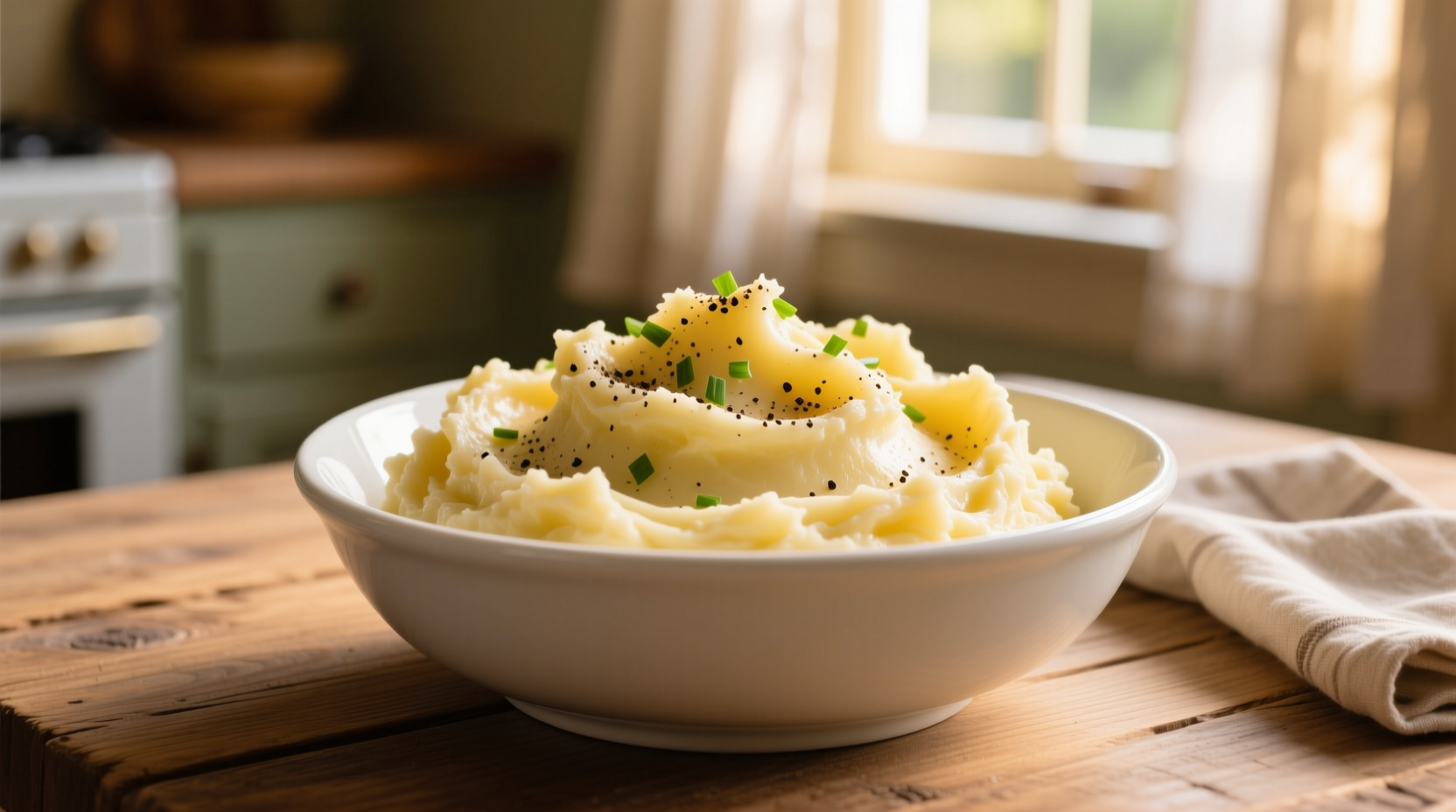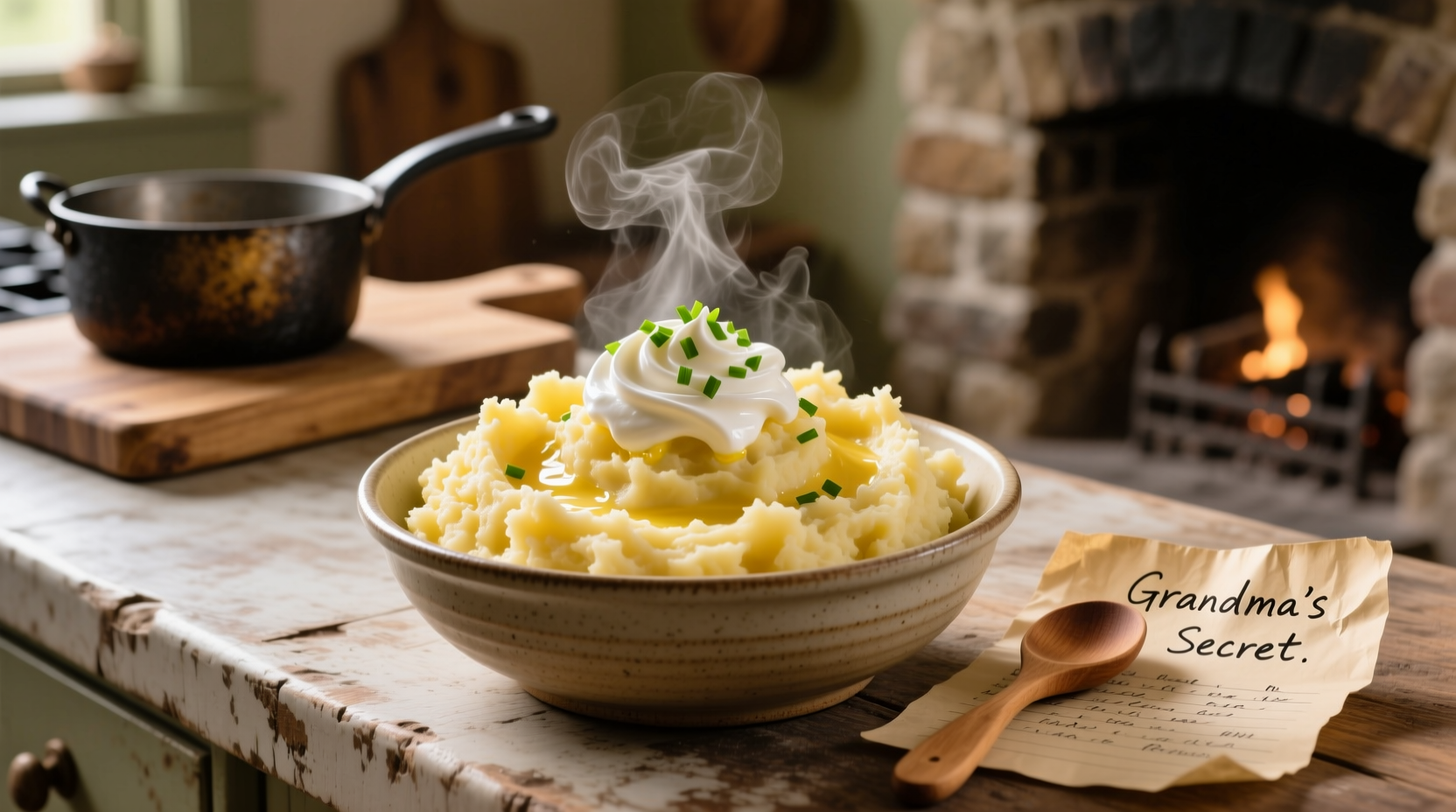The ultimate good mashed potato recipe features Yukon Gold potatoes boiled until fork-tender, mashed with warm butter and cream while avoiding overmixing to prevent gluey texture. This foolproof method delivers creamy, flavorful results in 30 minutes with just 5 essential ingredients: potatoes, butter, cream, salt, and white pepper.
The Science Behind Perfect Mashed Potatoes
Creating truly good mashed potatoes isn't just about following steps—it's understanding the food science that transforms humble tubers into creamy perfection. When potatoes cook, their starch granules absorb water and swell. The key is managing this process to achieve maximum creaminess without activating too much starch, which causes that dreaded gluey texture.
Professional chefs consistently emphasize three critical factors: potato variety selection, dairy temperature control, and gentle handling. Cold dairy added to hot potatoes creates lumps, while overworking releases excess starch. The ideal ratio? 1 pound of potatoes to 4 ounces of dairy and 2 ounces of butter delivers consistently rich results without overwhelming the potato flavor.

Potato Variety Comparison: Finding Your Perfect Match
| Potato Type | Starch Content | Texture Result | Best For |
|---|---|---|---|
| Yukon Gold | Medium | Creamy, buttery | All-purpose, classic mashed potatoes |
| Russet | High | Fluffy, light | Extra-creamy preparations with added dairy |
| Red Bliss | Low | Firm, waxy | Salads, not recommended for traditional mashed |
| Maris Piper | Medium-High | Smooth, velvety | British-style mashed potatoes |
According to USDA agricultural research, Yukon Gold potatoes contain approximately 15-18% dry matter, making them ideal for mashing. Their naturally buttery flavor and medium starch content create that perfect balance between creaminess and structure that defines a good mashed potato recipe. Professional kitchens often blend Yukon Golds with a small percentage of Russets (about 25%) to achieve maximum fluffiness while maintaining rich flavor.
Step-by-Step Preparation Guide
Preparation Essentials
Start with these non-negotiables for perfect mashed potatoes every time:
- Cut potatoes uniformly—1.5-inch cubes ensure even cooking
- Start in cold water—prevents uneven cooking and mushy exteriors
- Add salt to water—use 1 tablespoon per gallon for proper seasoning
- Warm your dairy—cold cream causes lumps and stops cooking prematurely
The Critical Mashing Process
After boiling potatoes until fork-tender (about 15-20 minutes), proper draining and drying is crucial. Return potatoes to the warm pot over low heat for 1-2 minutes to evaporate excess moisture—this prevents watery results. Then follow this sequence:
- Add room-temperature butter first (it emulsifies better)
- Incorporate warm cream gradually while mashing
- Use a potato ricer or food mill for lump-free texture
- Finish with salt and white pepper to taste
Food science research from Cornell University's Department of Food Science confirms that the order of ingredient incorporation significantly affects texture. Adding butter before liquid creates a stable emulsion that prevents the potatoes from becoming waterlogged.
Avoiding Common Mashed Potato Disasters
Even experienced cooks encounter these pitfalls. Understanding context boundaries helps you navigate them:
- Gluey texture—caused by overmixing with electric mixers. Solution: Hand-mash or use a food mill
- Watery consistency—results from insufficient drying after boiling. Solution: Return to warm pot for 2 minutes
- Lumpy potatoes—occurs when cold dairy hits hot potatoes. Solution: Warm all dairy components
- Bland flavor—happens when underseasoning. Solution: Season water AND finished product
Professional kitchens follow a strict rule: never use a food processor for mashed potatoes. The high-speed blades rupture too many starch granules, guaranteeing gluey results. This context boundary is critical for home cooks trying to scale up preparation.
Professional Variations Worth Trying
Once you've mastered the basic good mashed potato recipe, these chef-approved variations elevate your dish:
- Garlic confit mash—simmer 4 cloves garlic in 1/2 cup cream for 20 minutes before incorporating
- Horseradish twist—add 2 tablespoons freshly grated horseradish for bold flavor
- Truffle indulgence—stir in 1 teaspoon truffle oil after mashing for restaurant-quality results
- Dairy-free option—substitute warm olive oil and unsweetened almond milk for traditional dairy
Storage and Reheating Guidelines
Proper storage maintains texture and flavor. Follow these evidence-based recommendations:
- Refrigerate within 2 hours of preparation in airtight container
- Add 1-2 tablespoons cream when reheating to restore moisture
- Reheat gently over low heat—high temperatures cause separation
- Never freeze plain mashed potatoes (texture becomes grainy)
Food safety guidelines from the USDA Food Safety and Inspection Service confirm that properly stored mashed potatoes remain safe for 3-4 days in the refrigerator. For best results when reheating, add moisture gradually while warming to prevent drying out.











 浙公网安备
33010002000092号
浙公网安备
33010002000092号 浙B2-20120091-4
浙B2-20120091-4